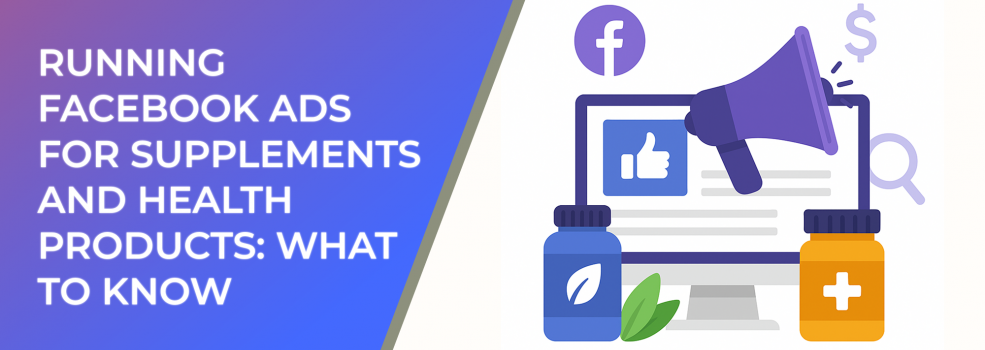Facebook is strict when it comes to health-related products. Ads for supplements often face additional scrutiny, and policy violations can quickly lead to disapproved ads or even account restrictions. Unlike fashion or entertainment, health claims must be carefully framed and fully compliant with Facebook’s advertising policies.
Some of the common challenges include:
-
Restrictions on claims: You cannot promise unrealistic results (e.g., “Lose 10 pounds in a week”).
-
Prohibited before-and-after images: Visuals suggesting drastic changes are not allowed.
-
Limited targeting options: Certain health-related interests are restricted, making audience targeting more difficult.
Despite these restrictions, supplements and health products can perform very well on Facebook when advertisers use smart strategies and focus on building trust.
Why Facebook Ads Work for Health Brands
According to industry data, U.S. supplement sales surpassed $50 billion in 2023, with much of the growth coming from online channels. Facebook and Instagram play a central role in that expansion, offering:
-
Precise audience targeting: Interest-based targeting, lookalike audiences, and retargeting.
-
Visual storytelling: The ability to show supplement packaging, lifestyle shots, and educational content.
-
Scalability: Campaigns can start small and expand once proven.
One study shows that 79% of consumers prefer personalized offers, which means well-structured campaigns with layered targeting and creative testing deliver better ROAS (Return on Ad Spend).
Best Practices for Facebook Ad Optimization
1. Focus on Compliance-First Creatives
Compliance is not optional—it’s the foundation of long-term advertising success. Avoid exaggerated claims, focus on lifestyle benefits, and use neutral but positive language. For example, instead of “burn fat fast,” use “supports a healthy metabolism.”
2. Optimize with Data, Not Guesswork
Facebook ad optimization works best when advertisers test multiple variables:
-
Different creatives (lifestyle photos, product shots, educational graphics)
-
Multiple ad formats (carousel, video, stories)
-
Diverse audiences (lookalike, retargeting, broad with smart layers)
Tracking CTR (Click-Through Rate) and CPA (Cost Per Acquisition) helps identify winning campaigns. A/B testing ensures that you double down on what works instead of relying on assumptions.
3. Build Retargeting Funnels
Funnel illustrating stages of a retargeting campaign—from education to conversion
Health products usually require trust before purchase. Retargeting campaigns are essential for warming up audiences:
-
Stage 1: Educational content (benefits, usage, FAQs)
-
Stage 2: Social proof (testimonials, case studies)
-
Stage 3: Offer-driven ads (discounts, bundles, free shipping)
This funnel not only drives conversions but also improves Facebook’s algorithm learning, leading to more efficient delivery.
4. Use Broad Audiences with Smart Layers
Recent Facebook trends show that broad targeting combined with optimized creative often outperforms hyper-niche targeting. Adding smart layers such as age, general lifestyle interests, or behaviors can help filter out unqualified users while maintaining scale.
5. Continuously Refresh Creatives
Ad fatigue is a real problem. Updating visuals and copy every 2–3 weeks keeps performance high. For health products, rotating between product-focused ads, lifestyle ads, and testimonial-style ads is effective.
Metrics That Matter
Facebook Ads benchmarks: average CTR, CPC, and CPL across industries
For supplement and health product advertisers, the most important KPIs include:
-
CTR (Click-Through Rate): Indicates if your creative resonates.
-
CPA (Cost Per Acquisition): Shows efficiency of spend.
-
ROAS (Return on Ad Spend): Determines profitability.
Across industries, Facebook ads see an average CTR of 0.9%, but supplement campaigns that follow best practices often achieve 1.5–2% CTR, proving the importance of tailored optimization.
Suggested Reading on LeadEnforce Blog
If you want to dive deeper, check out these related articles:
Conclusion
Running Facebook ads for supplements and health products requires balancing compliance with optimization. By focusing on creative testing, smart targeting, and retargeting funnels, brands can turn restrictions into opportunities. With the right strategy, supplements can achieve strong ROAS and scalable growth on Facebook.

